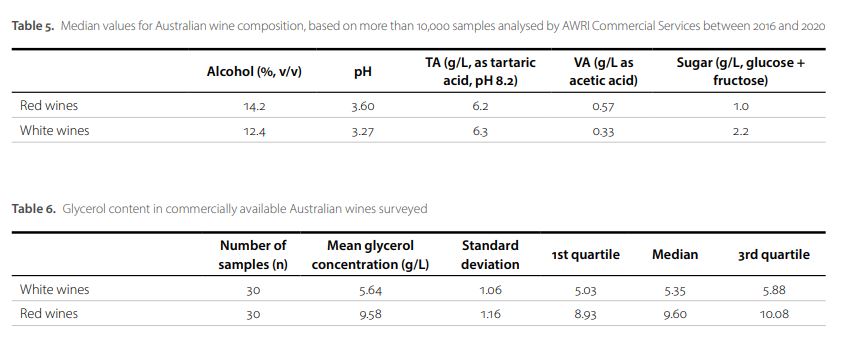Tracking trends in Australian wine composition and vineyard and winery practices
Project summary
It is important for the Australian wine sector to track how it is evolving – how common different production practices are and how wine composition is changing. This allows producers to compare their practices with their peers and helps organisations like the AWRI in choosing relevant research and extension activities. This project addresses these goals through a regular practices survey, aggregate analysis of chemical data from AWRI Commercial Services and other targeted activities.
Latest information
Leveraging the AWRI’s foundational data
An emerging topic in the global wine industry is a possible future requirement for wines to be labelled with their energy content. Given the wide variety of wines and the potential variability of energy contribution from different components, calculating values that are both accurate and meaningful to the consumer poses some challenges. This is compounded by the fact that some contributing components (such as glycerol) are not routinely measured, as well as the emergence of low- and no-alcohol wines. To support the wine industry in preparing submissions to regulatory authorities on the best approach for energy labelling, the project team reviewed the composition of more than 10,000 wines submitted for analysis between 2016 and 2020 using the AWRI Commercial Services database. These data were used to create a snapshot of the typical composition of Australian red and white wines, as presented in Table 5.
Because glycerol results were not well represented in the AWRI Commercial Services database, a survey of a random selection of 30 white and 30 red commercial wines was carried out. Results are presented in Table 6.
The median values for glycerol in red wines were significantly higher than those for white wines. This is in keeping with literature for overseas wines and is related to the increased skin contact in red winemaking as well as the contribution to glycerol from secondary fermentation. Glycerol data was also obtained for a range of low-alcohol products donated by industry partners, showing that in general the glycerol concentrations in these products were consistent with the ranges seen for products with typical alcohol levels. These data, in conjunction with the typical wine component values in Table 5, will be extremely valuable for determining the best approach for energy content labelling, ensuring that any future regulatory framework reflects both consumers’ and industry’s needs.

Project Contacts
Eric Wilkes, Simon Nordestgaard

